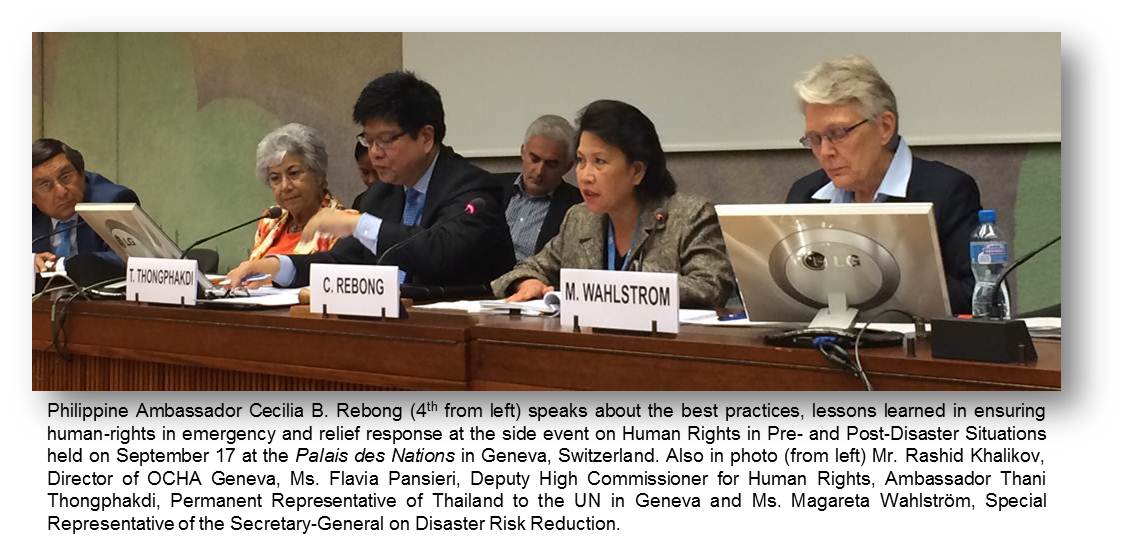
25 September 2014 - As a member of the United Nations committed to the promotion and protection of human rights, the Philippines shared its best practices and lessons learned in ensuring that human rights are incorporated in emergency relief and response mechanisms of the government in a side-event on “Human Rights in Pre- and Post-Disaster Situations” held on September 17 at the Palais des Nations.
The event, co-organized by the Philippines, Thailand and Finland, discussed the extent to which natural disasters affect the basic human rights of people and on how governments and humanitarian actors integrate human rights into their disaster preparedness and response.
“As a country that is prone to natural disasters because of its geographical location, the Philippines has always taken a proactive approach in reducing the risks posted by these natural calamities,” Ambassador Cecilia B. Rebong, Permanent Representative of the Philippines to the United Nations and other International Organizations, said during the event.
She further stated that it is vital to ensure that the promotion of human rights of all members of the population, and humanitarian law principles, are integrated into disaster risk manage-ment, including in pre-disaster mitigation and preparedness measures, emergency relief and rehabilitation and reconstruction efforts.
She further noted that the Philippines’ concrete commitment to making sure that the human rights of its people are protected in times of calamities is manifested by the establishment of the National Disaster Risk Reduction and Management Council or NDRRMC, tasked to for-mulate a national disaster risk reduction and management (DRRM) framework. This Council is composed of almost all government agencies, the Office of the President, local govern-ment units, civil society organizations, and the private sector.
Also discussed by the Philippine Ambassador were some of the lessons learned by the Philippines in managing calamities.
“We have proven that the cluster system that the government had put up before Typhoon Haiyan really worked and it complemented the cluster system that the UN system had in place. The two systems worked very well,” she said adding that “our Government is now looking at how to make local communities more involved in disaster risk reduction, preparedness, prevention, and resiliency programs, particularly the most vulnerable members of the population.” END

